By Theme:Arts and Literature | Campus Sustainability | Community Perspectives | Development | Economic Analysis | Ecosystem Analysis | Education | Energy | Environmental Justice | Food Systems | Geology of the Watershed | Green Architecture | Green Business | History of the Watershed | Invasive Species | Land Use Patterns | Public Policy | Recreation | Transportation | Water Quality
Public Policy
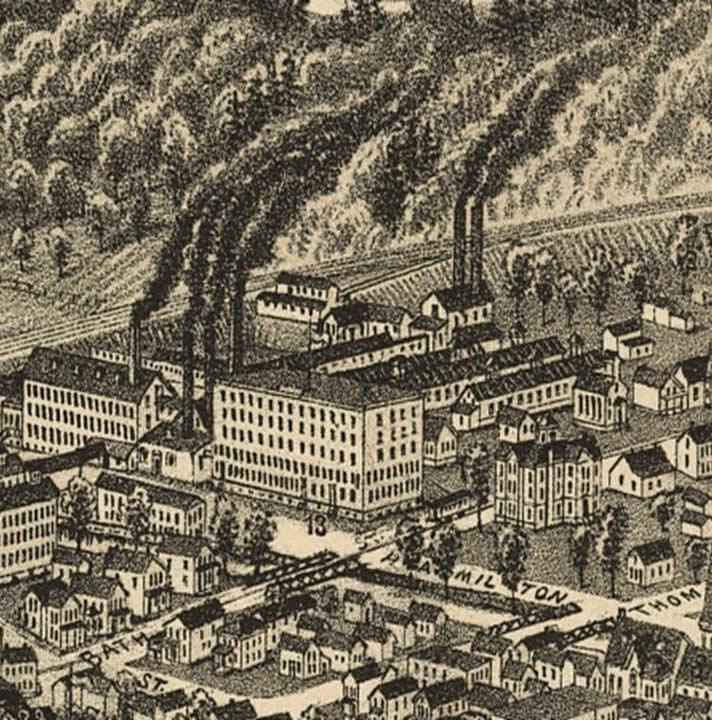 Whalen v. the Union Bag & Paper Company: Early Environmental Law on the Kayaderosseras
Creek and Its Influence on Contemporary Law
Whalen v. the Union Bag & Paper Company: Early Environmental Law on the Kayaderosseras
Creek and Its Influence on Contemporary Law
Ben Schweers (2007)
This project is a historical analysis of the Whalen v. The Union Bag & Paper Company case. The lawsuit offers insight into environmental concerns of early 19th century Ballston Spa and signifies the beginning of environmental law and environmentalism in New York State. The lawsuit's outcome is still relevant for environmental law today.
Full report is not available. Please contact Karen Kellogg for more information.
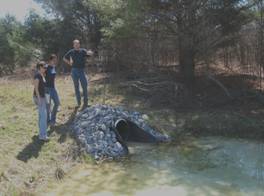 Assessing Stormwater Runoff and Policy in the Kayaderosseras Watershed, New York
Assessing Stormwater Runoff and Policy in the Kayaderosseras Watershed, New York
Meghan Lena, Jessica Morten, and Angela Polletta (2008)
Our study examines the impact of land-use on stormwater runoff in the Kayaderosseras watershed using the Long-Term Hydrologic Impact Assessment (L-THIA) model. We also examine local management goals aimed at fulfilling federal and state stormwater policy and assessed implementation success based on town annual reports. We interviewed local officials and site inspectors regarding the challenges of implementing local stormwater management policies, and in particular, sediment and erosion control at construction sites.
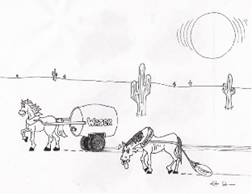 What to do about a Drought in a Bout of Drought: Understanding Drought in a Water-Rich
Region
What to do about a Drought in a Bout of Drought: Understanding Drought in a Water-Rich
Region
Andy Hart and Kate Stevens (2008)
This study explores the causes of drought in Saratoga and how the city responds to instances of drought. Our results reveal that drought in Saratoga can be affected by precipitation, population growth, water consumption, and Loughberry Lake’s storage capacity. Drawing from interviews with Public Works officials, we learn that the city manages small drought periods with mainly reactive responses. In order for the city to have a genuine proactive drought management policy, a larger water source with more storage capacity is needed to both store water and provide guaranteed water for the citizens of Saratoga in a time of severe drought.
Full report is not available. Please contact Bob Turner for more information.
Politics and Planning in Saratoga County
Ryan Bailey '09 and Bob Turner, Department of Government (2007)
The continuing economic growth of Saratoga County raises the important question of whether the region is condemned to end up as yet another case of unchecked suburban sprawl. To assess the prospects for the region to successfully balance growth with preserving open space and enhancing the quality of life, we analyzed the political, economic, and institutional factors affecting planning in Malta, Stillwater, and Saratoga County.
Full report is not available. Please contact Bob Turner for more information.
 The Uneven Implementation of the Saratoga Lake Watershed Management Plan: Priorities
and Perceptions of Municipalities within the Watershed
The Uneven Implementation of the Saratoga Lake Watershed Management Plan: Priorities
and Perceptions of Municipalities within the Watershed
Ryan Bailey and Lyndsay Strange (2009)
In 2002, a group of stakeholders created a Saratoga Lake Watershed Management Plan
to protect and improve the watershed's resources. Despite this, implementation of
the plan's recommendations has been very uneven throughout the watershed's municipalities.
Through interviews with local town officials, we identify and explain the factors
that affect the implementation of these programs.
Full report is not available. Please contact Bob Turner for more information.
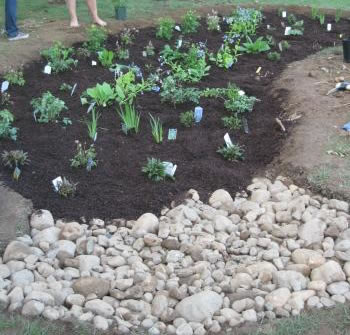 Current Stormwater Management in Saratoga Springs and the Challenges of Implementing
Low Impact Alternatives
Current Stormwater Management in Saratoga Springs and the Challenges of Implementing
Low Impact Alternatives
Allison Ruschp, Caitlin Frame, and Dani Rueter (2009)
We explored the feasibility of incorporating low impact design into Saratoga Springs stormwater management program. We interviewed developers, public works officials, planning board staff, city engineers, and state stormwater engineers to discover the challenges facing the implementation of low impact stormwater management. Saratoga Springs is close to meeting current federal standards but has no funding mechanisms for stormwater management; low impact design is being encouraged for new developments.
Full report is not available. Please contact Cathy Gibson for more information.
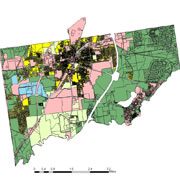 A Watershed Approach to Land Conservation in the City of Saratoga Springs, New York
A Watershed Approach to Land Conservation in the City of Saratoga Springs, New York
Dan Haro and Carolyn Raider (2010)
Saratoga is New York’s fastest growing county. Population increase leads to residential and commercial development, resulting in habitat degradation and fragmentation. Saratoga Springs provides conservation through its zoning ordinance, "the Green Belt." Our study identifies high priority sites to protect within Saratoga’s “Green Belt” conservation zone. We identify the least developed watersheds as well as watersheds with the highest percentage of forest, wetland, open water, and grassland/shrub habitats. We recommend replacing the current parcel-based approach to conservation with a more relevant and environmentally successful watershed approach. We also recommend additional protection for watersheds with a low percentage of development.
Full report is not available. Please contact Josh Ness for more information.
 The "Greens" are Checking In: Assessing the New York State Green Hotel Partnership
The "Greens" are Checking In: Assessing the New York State Green Hotel Partnership
Dana Leonard and Derek Stork (2010)
New York has identified a national shift in the hospitality and tourism industry to
more environmentally friendly business practices, saving both operating costs and
natural resources. To influence this change, New York has established the Green Hospitality
and Tourism Partnership and Certification Program. To achieve a comprehensive understanding
and assessment of the Green Hotel Certification Program and Partnership, open-ended
interviews were conducted to address every level of involvement with the program.
Through the interviews and extensive media coverage we have found that select hotels
across New York are becoming ambassadors and are essential to the eco-tourism movement
in New York.
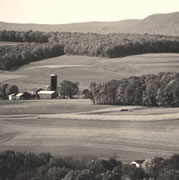 Critical Instability: Why We Need to Revolutionize Domestic Agriculture Before It's
Too Late
Critical Instability: Why We Need to Revolutionize Domestic Agriculture Before It's
Too Late
Dash Hammerstein and Andrew Pfeifer (2010)
This study looks at issues concerning agricultural and farmland protection easements and farm viability in Saratoga County. Through in-depth interviews with 10 farmers, we have found that the Purchase of Development Rights (PDR) program is not an adequate tool to combat the recent and ongoing loss of local farms. Policies aimed at increasing farm viability, especially through the stabilization of milk prices and public education, are necessary to insure a future for Saratoga County agriculture.
Full report is not available. Please contact Karen Kellogg for more information.
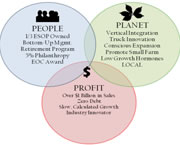 "We Are Closer to You": Stewart's Shops and Corporate Social Responsibility
"We Are Closer to You": Stewart's Shops and Corporate Social Responsibility
Harrison Shulman and Jim Turley (2010)
We studied the workings of Stewart's Shops to determine the practices that have enabled
them to be successful in business while maintaining a positive relationship with the
communities in which they operate stores as well as a low environmental impact. We
have discovered that Corporate Social Responsibility does not have to be driven by
a desire to strictly avoid risk, develop a marketing strategy or target a niche market.
In the case of Stewart's Shops, Corporate Social Responsibility has been the result
of their desire to make money and stay in business one hundred years from now.
Full report is not available. Please contact Karen Kellogg for more information.
 Balancing Economic Growth with Environmental and Social Concerns: Evaluating SEQRA
Through a Case Study of Global Foundries
Balancing Economic Growth with Environmental and Social Concerns: Evaluating SEQRA
Through a Case Study of Global Foundries
Korena Burgio and Evan Caster (2011)
New York State sought to revitalize its economy by attracting semiconductor manufacturing to the Upstate region by competing globally for Global Foundries' newest microchip fabrication facility, Fab 8. Our analysis explores the role New York’s State Environmental Quality Review Act (SEQRA) in evaluating the comprehensive economic, environmental, and social impacts associated with Fab 8’s construction and operations in Malta, NY.
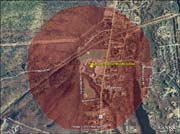 Creating Safe Routes to Maple Avenue Middle School: Not as Easy as it Seems
Creating Safe Routes to Maple Avenue Middle School: Not as Easy as it Seems
Martel Catalano and Jesse Watson (2011)
We participated in the Saratoga Safe Routes to School group to expand the ability of students to walk or bike to Maple Avenue Middle School. By conducting applied research and meeting with key stakeholders, we analyzed the environmental, economic, political, legal, and cultural obstacles of changing school transportation policies.
 Promoting Environmental Sustainability Initiatives: The Role of a Chamber of Commerce
Promoting Environmental Sustainability Initiatives: The Role of a Chamber of Commerce
Kelly McDonnell and William Moseley (2012)
A significant, positive association has been found between environmental stewardship and economic growth. Taking this into consideration, our study focuses on the role of Chambers of Commerce in forwarding environmental sustainability initiatives. This study was informed by interviews with 20 Chambers of Commerce and interviews with Saratoga County Chamber members. Out research culminated in a series of recommendations for the Saratoga County Chamber of Commerce to promote environmental sustainability in Saratoga.
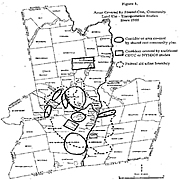 SEQRA: The Construction of Effective Change
SEQRA: The Construction of Effective ChangeSam Glickman and Drew Levinson (2012)
The New York State Department of Environmental Conservation is process of creating a set of proposed revisions to the documents associated with the New York State Environmental Quality Review Act (SEQRA). We conducted a stakeholder analysis to evaluate the effectiveness of the SEQRA process. We then compared our findings with the proposed revisions to determine if these changes are addressing the identified inadequacies within the SEQRA process.
 The Toxicology of Saratoga's Drinking Water: Herbicides Impact Aquatic Animals
The Toxicology of Saratoga's Drinking Water: Herbicides Impact Aquatic AnimalsPaige Reeves and Sarah Hunter (2012)
Our drinking water reservoir, Loughberry Lake, is treated with a chemical algicide, copper sulfate. We investigated the effects of copper sulfate on non-target aquatic invertebrates by exposing aquatic snails, insects, and leeches to one of three copper concentrations, all below the limit set by the EPA. All three types of organisms experienced altered metabolic responses, and ultimately increased mortality rates, in the presence of copper sulfate relative to controls with no copper sulfate added.
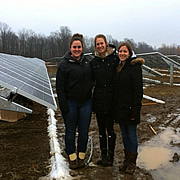 Taking the (Sun) Initiative: An analysis of solar installations in New York’s Capital
Region
Taking the (Sun) Initiative: An analysis of solar installations in New York’s Capital
RegionJenna Spooner, Caitlin White, and Anne Weis (2014)
Fossil fuels are the largest source of greenhouse gas emissions. We investigated the incentives, challenges, and barriers to implementing commercial solar installations at three sites in Saratoga Springs and Troy, and at Skidmore College, through research and interviews. While financial incentives for solar projects are difficult to get but necessary for implementation, the people behind these initiatives seem more interested in their moral responsibility.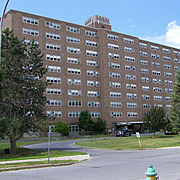 Barriers to Affordable Housing and Sustainable Solutions: A Case Study of Saratoga
Springs, New York
Barriers to Affordable Housing and Sustainable Solutions: A Case Study of Saratoga
Springs, New YorkLauren Bosche, Emily Durante, and Margaret Patterson (2015)
The purpose of this research is to contextualize Saratoga Springs as a case study for finding sustainable solutions to housing problems commonly faced by cities that undergo urban renewal. Using archival research, we investigated the specific challenges that Saratoga Springs faces. Through interviews we gained an understanding of the obstacles that affect access to and development of affordable housing programs in the Saratoga Springs region.
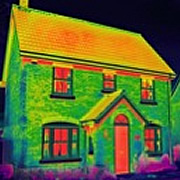 Retrofitting Homes for Energy Efficiency for Low Income People: A Case Study of Saratoga
County
Retrofitting Homes for Energy Efficiency for Low Income People: A Case Study of Saratoga
County
Amy Weaver, Melissa Chilinski, and Spencer Nelson (2015)
We analyzed the effectiveness of low-income weatherization in Saratoga County, NY. Based on a comprehensive examination of literature on weatherization programs at a global and national level, funding appears to be the greatest barrier for low-income weatherization programs. We suggest allocating more funding to programs that focus on a streamlined approach to weatherizing mobile homes as a way to maximize funding and houses weatherized.
 Public Perception of Crude Oil Transport via Rail in Saratoga County
Public Perception of Crude Oil Transport via Rail in Saratoga County
Caroline Hobbs, Colton MacKay, Emily Mangan, & Christine Munisteri (2016)
Crude oil transport via rail has increased drastically over the past six years due to increased oil production in the Bakken Shale. Communities near rail lines experience heightened risk from its transport. We assessed public perception of risk regarding crude oil transport via rail in Saratoga County NY using surveys, semi-structured interviews, and GIS mapping. The data give us a better understanding of the general awareness of crude by rail transport and future needs of Saratoga County.
Paper is not available. For information, please contact the ESS Program Director.

Energizing schools: A feasibility study of energy improvements for Saratoga Springs City School District (SSCSD)
Khalil Choukeir, Jack Curry, and Miary Rasoanaivo (2018)
The 6,000 public and private schools in New York State spend approximately $1 billion
annually on energy. We created an energy and greenhouse gas (GHG) inventory for SSCSD
and propose ways to reduce their energy costs and GHG emissions. The proposed LED
lighting project would save the school district $22,367 annually, with a <2-year payback
period. Proposed geothermal and solar thermal systems have longer payback periods.
Lastly, we propose a solar-powered sustainability park at the high school to be designed
and installed by the students and faculty.
Paper is not available. For information, please contact the ESS Program Director.
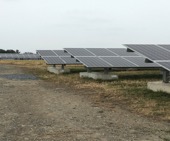
Opportunities for Community Shared Solar in Saratoga County: Policy, Economics & Interest
Corey Brown and Henry Hoffmann (2018)
Community Shared Solar (CSS) is a rapidly growing form of renewable energy that allows residential and small business customers to acquire shares of solar energy and receive credits or savings on monthly electric bills. We analyzed the feasibility of a CSS project in Saratoga County and found it is viable, as replicable models are feasible, financial incentives are increasing, land parcels such as brownfields are available for repurposing, and community interest is strong. Management remains the biggest hurdle to short-term development.
Paper is not available. For more information, please contact the ESS Program Director.

Our research investigated preferences regarding management techniques for addressing high-use in the High Peaks Wilderness Complex (HPWC) in the Adirondacks. Data was gathered from 1200 public online surveys, semi-structured interviews with NGOs and community influentials, and archival analysis. Members of the public and NGOs strongly supported passive management such as increased funding, enhanced education, and trail reconstruction. Similarly, both groups were split in support for more direct management techniques.
Paper is not available. For information, please contact the ESS Program Director.
 Environmental Justice is Exhausting: 5 Decades of Air Pollution at Ezra Prentice Homes
in Albany New York
Environmental Justice is Exhausting: 5 Decades of Air Pollution at Ezra Prentice Homes
in Albany New York
Haja Bah, Saima Hannan, Sophia Livecchi (2021)
Our case study research worked to better understand the historical and more contemporary environmental justice issues faced by the residents of Ezra Prentice Homes, a predominately Black, low-income community of color located in the south end of Albany, New York. Through narrative and archival analysis, and purposeful sampling we conducted semi-structured interviews with a diversity of stakeholders from both within and outside of this marginalized community.
Paper is not available. For information, please contact the ESS Program Director.
